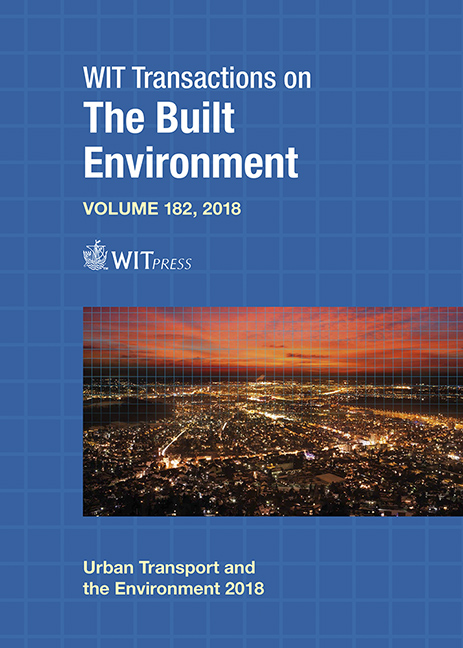MODELLING RATE OF TRAFFIC-INDUCED BUILDING VIBRATIONS IN SANGO-OTA, NIGERIA: AN ASSUMPTION BASED ANALYSIS
Price
Free (open access)
Transaction
Volume
182
Pages
11
Page Range
303 - 313
Published
2019
Paper DOI
10.2495/UT180281
Copyright
WIT Press
Author(s)
OLUSEYI OLANREWAJU AJAYI, MICHAEL CHIKODI AGARANA, ISAAC IBUKUN AKINWUMI, PRINCESS IMHADE OKOKPUJIE, ENESI YEKINI SALAWU, ABIODUN AYODEJI ABIOYE, ADENIRAN SUNDAY AFOLALU, RICHARD OLUFEMI LERAMO
Abstract
This work investigates the phenomenon of transport induced building vibrations in the study area with a view to creating suitable model which can be used at any time to predict the extent of building oscillations created by vehicular movements on adjacent roads, based on ’the volume of heavy vehicle traffic hypothesis. Series of interviews were conducted and a randomized manual volumetric heavy-vehicle traffic counts were carried out at one of the sites used for the study. Results showed that 100% of the respondents agreed to the stated effects of vehicle transportation, which include noise, vibrations, accidents and carbon monoxide emissions while 86.7% agree that traffic-induced building vibrations are caused by heavy vehicular movements within the study areas. The outcome of the volumetric count was employed with suitable assumption that is based on the volume of heavy vehicle traffic hypothesis to develop a model for predicting rate of traffic-induced building vibrations. This model can also be used to predict extent of damage when the damage parameters resulting from such individual vibrations are known. This study is used to show a pathway to predicting extent of annoyance which can result from vehicular movements in an area.
Keywords
traffic count, model, probabilistic, regression analysis, building vibrations





